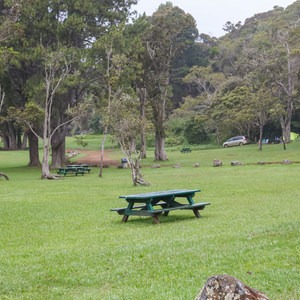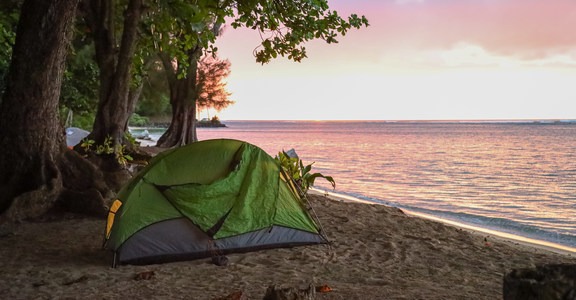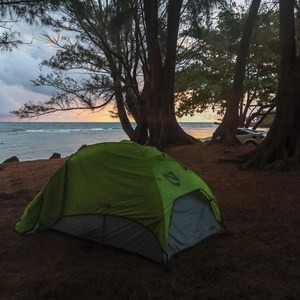Honopū Valley is a landmark along the Nā Pali coast. Its name means "conch shell" in Hawaiian, and it is derived from the strong north winds that funnel through a rock arch and make a whistling noise. Many Hawaiian legends mention Honopū Valley as a burial ground for ancient chiefs, whose bones were sacred. Anyone who found the hidden bones could use their mystical powers, therefore those who hid the chief's remains had to be executed to ensure the secrecy of the location. For a wild adventure to the top of the dramatic Nā Pali cliffs, look no further than the Honopū Ridge Trail in the Koke'e State Park. This roughly 5-mile hike down and back up the ridgeline will have trekkers questioning their sanity at times, but it yields a truly unbelievable view of the coastline thousands of feet below. The trail is not maintained by park officials, and it requires traversing over and under logs, slippery mud slopes, dense uluhe ferns, and heavily eroding cliffsides. This is not a simple trail to be underestimated. Due to its untamed approach, you are not likely to see many other hikers along the Honopū Ridge Trail.
The trail starts at an unmarked pullout just after mile marker 17.5 and just before the Kalalau Lookout. Unlike the neighboring Awa'awapuhi Trail, there are no facilities or even trailhead signs. Hikers follow the trail under a large tree limb at the back of the parking area and must keep on the lookout for ribbons marking the way. The trail meanders through a wet cloud forest before making some steep descents down muddy terrain. The forest becomes drier as the trail begins to open up into uluhe ferns, which poke, scratch, and scrape exposed skin. Roughly 1.5 miles in, the first views down the ridge appear and the sound of tour helicopters can be heard in the valley below. Continuing down the ridge, hikers encounter dry stands of endemic koa and ʻōhiʻa lehua trees with their sickle-shaped leaves and bright flowers. Looking down toward the coast, the thin stretch of beach and the Honopū Arch can be seen in the distance. Tour boats and catamarans glide through the white caps. Up to this point the trail has continuously descended almost a thousand feet, but now the undulating peaks of the ridge require some strenuous ups-and-downs. The bright red clay mud is quickly eroding, making the final stretch of the trail rather unstable. Trekking poles or microspikes are lifesavers. At around 2.5 miles, sheer drops on both sides of the trail require sure footing and steady wits; a slip from these heights could be fatal. The view from the final ridge peak is truly breathtaking, and on clear days one can see all the way to the north shore with endless cliff ridges in between. Save plenty of water and energy to re-ascend back up the ridge to the parking area.






























Comments
Sign In and share them.